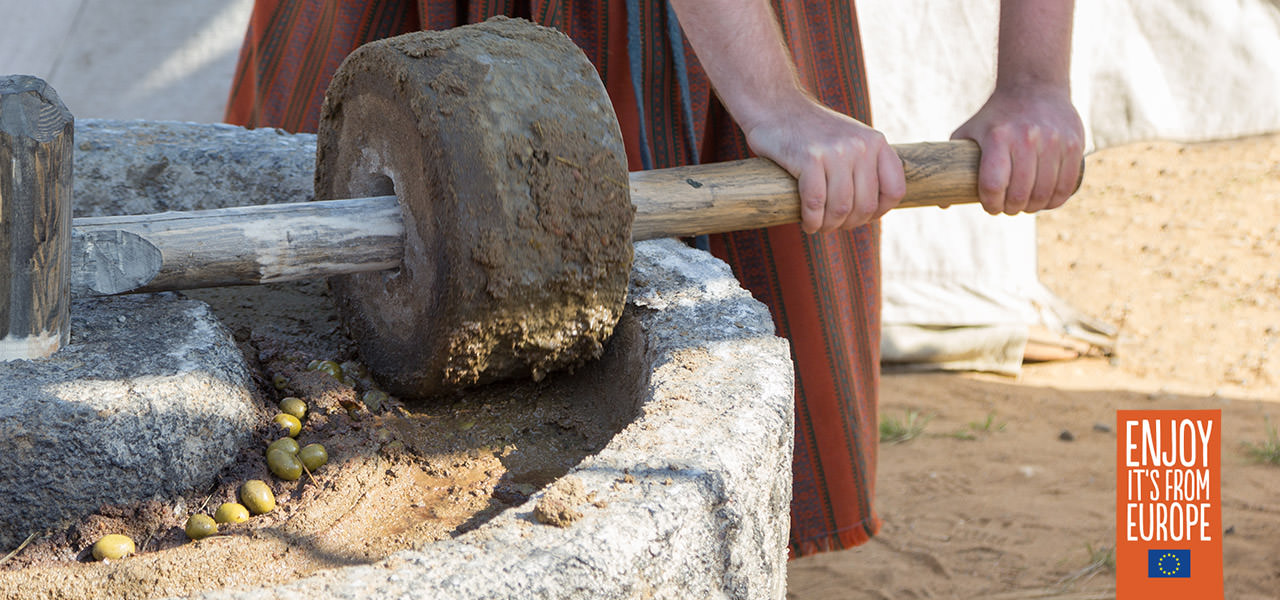
In ancient Rome, olive oil was not only considered “sacred”, it was also used in the production of scented creams and medicinal balms used for healing wounds, relieving itching and treating nettle stings. In addition, soldiers used to rub themselves with oil to protect themselves from the cold.
The rise of the Roman Empire led to the further development of olive cultivation, with
the plant being introduced in newly conquered lands.
The processing, cultivation techniques, harvesting and production of olives improved considerably over time thanks to industrial advancements in this sector.
The Romans were the first to use product classifications for olive oils:
- Oleum ex albis ulivis: oil of the highest quality obtained from unripe green olives
- Oleum viride: good quality oil obtained from olives that have just darkened
- Oleum maturum: oil obtained from ripe olives; lower in quality than the first two types
- Oleum caducum: mediocre quality oil extracted from olives harvested from the ground because they had fallen from the tree due to advanced ripening
- Oleum cibarium: very poor quality oil obtained from olives affected by parasites and intended for slaves or for non-food uses
These differentiations gave rise to a specialised trade regulated by fixed selling prices.
